BBC Earth newsletter
BBC Earth delivered direct to your inbox
Sign up to receive news, updates and exclusives from BBC Earth and related content from BBC Studios by email.
Plants
It’s easy to get tricked into believing that there’s an innate simplicity to nature but these plants will prove that wrong.
Big things eat smaller things, smaller things eat even smaller things, even smaller things eat… well, you get the idea. And right at the bottom of the chain are plants who appear to need only water and sunlight to survive.
But nature is never simple. Because amongst all that serene, seemingly innocuous foliage, there is a whole slew of carnivorous specimens that not only consume flesh (to obtain much-needed nutrients not found in soil), but also use devious, innovate and even predatory means to ensnare their prey.
Venus Flytrap
Perhaps the most famous of the carnivorous plants, this iconic bug-munching member of the sundew family is far savvier than you might imagine.1 The leaf features a jaw-like hinged section, rimmed with spiny “teeth” along the edge, together with a number of highly sensitive hairs. When an insect lands and makes contact with these hairs, the trap snaps shut. The writhing movement of the ensnared prey stimulates enzymes, which digest the insect over a number of days.2 The plant is so sophisticated that it can even identify non-prey stimulation, such as raindrops.3
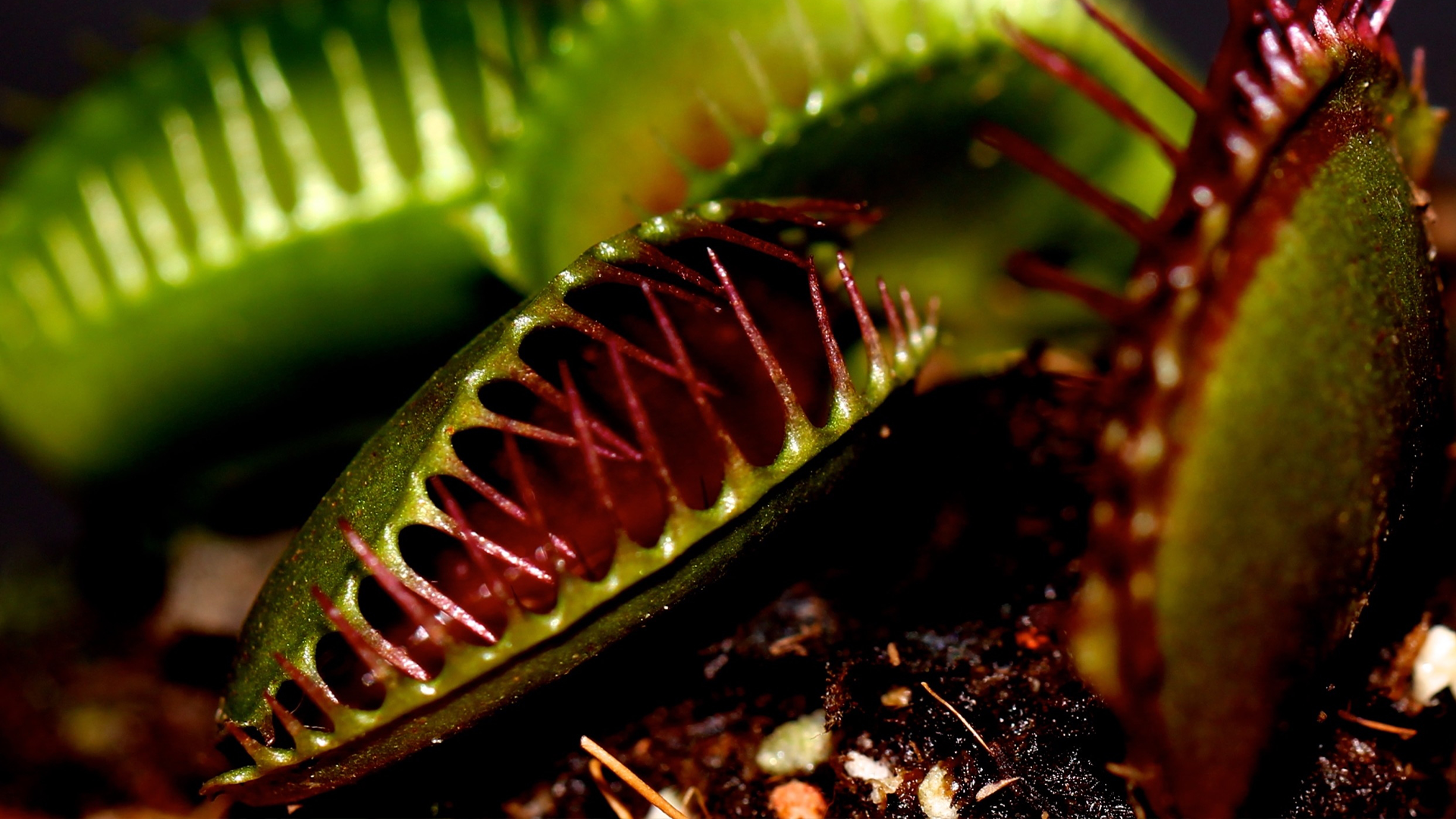
Yellow Pitcher Plant
The family of carnivores known as pitcher plants – because of their shape – use modified leaves that form a tube-like structure to lure insects, then trap and digest them. Found in the southern United States, the yellow pitcher plant is a particularly striking example of the species, which can grow to be a metre in height.4 Insects are drawn in by their vibrant colour, as well as by a nectar that also contains a toxin that incapacitates them. The waxy walls of the tube ensure insects slide to the base where digestive fluids soon dispatch them.5
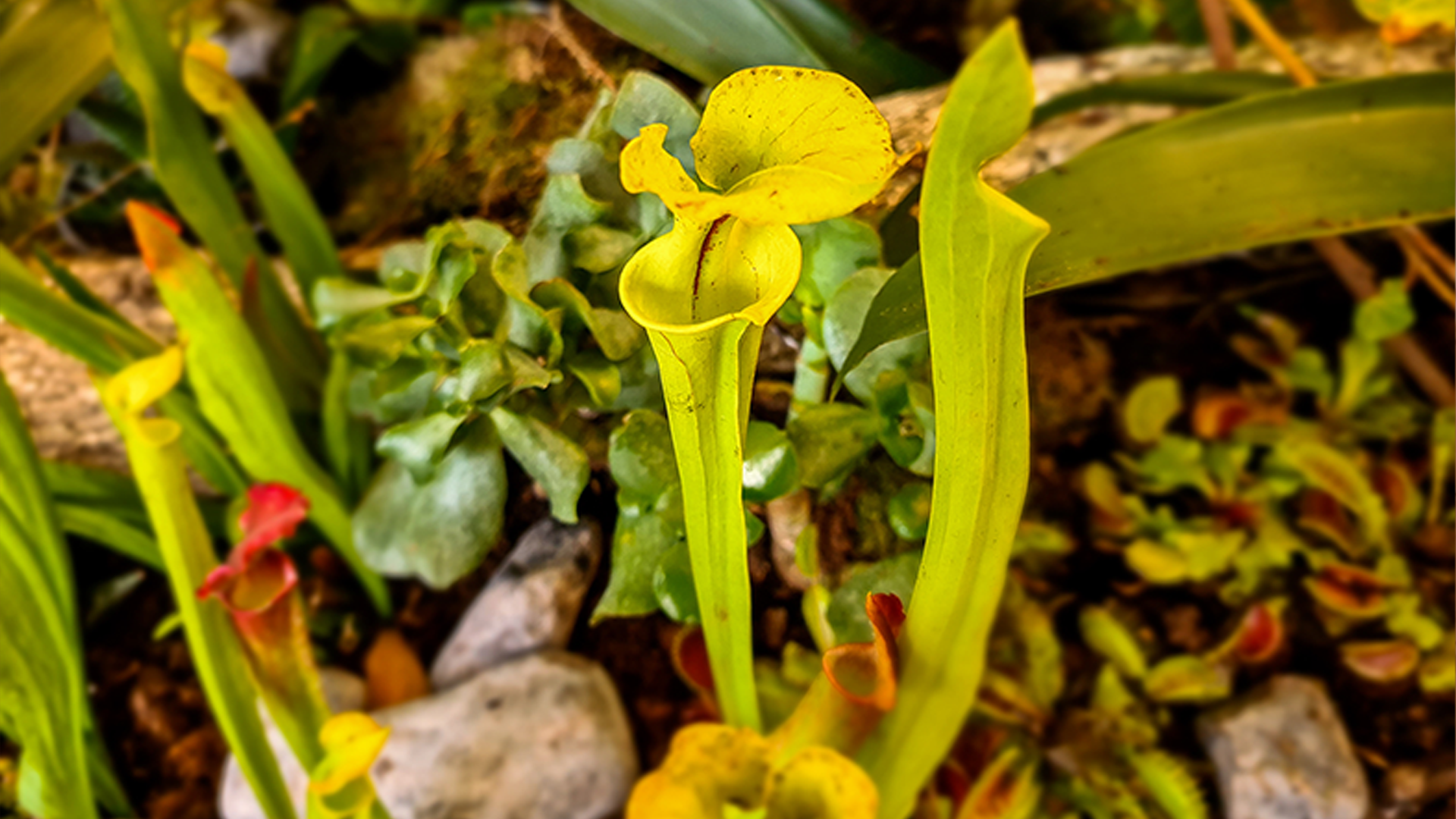
This member of the carnivorous pitcher plant group is commonly known as ‘monkey cups’, as primates have been observed drinking from the leaves when thirsty. The nepenthes rajah, found in Borneo, is one of the largest flesh-eating plants on the planet. This deadly plant can grow to be six metres in length, and hold up to 3 litres of water and two and a half litres of digestive juices.6 Its whopping size means that its diet is not simply reserved for invertebrates; frogs, lizards, birds and even rats have been lured inside, where they’re dissolved in acid. It has also developed an unusual, symbiotic relationship with the local mountain shrew. The shrew feeds on the plant’s nectar and then defecates into the pitcher, providing it with much needed nitrogen.7
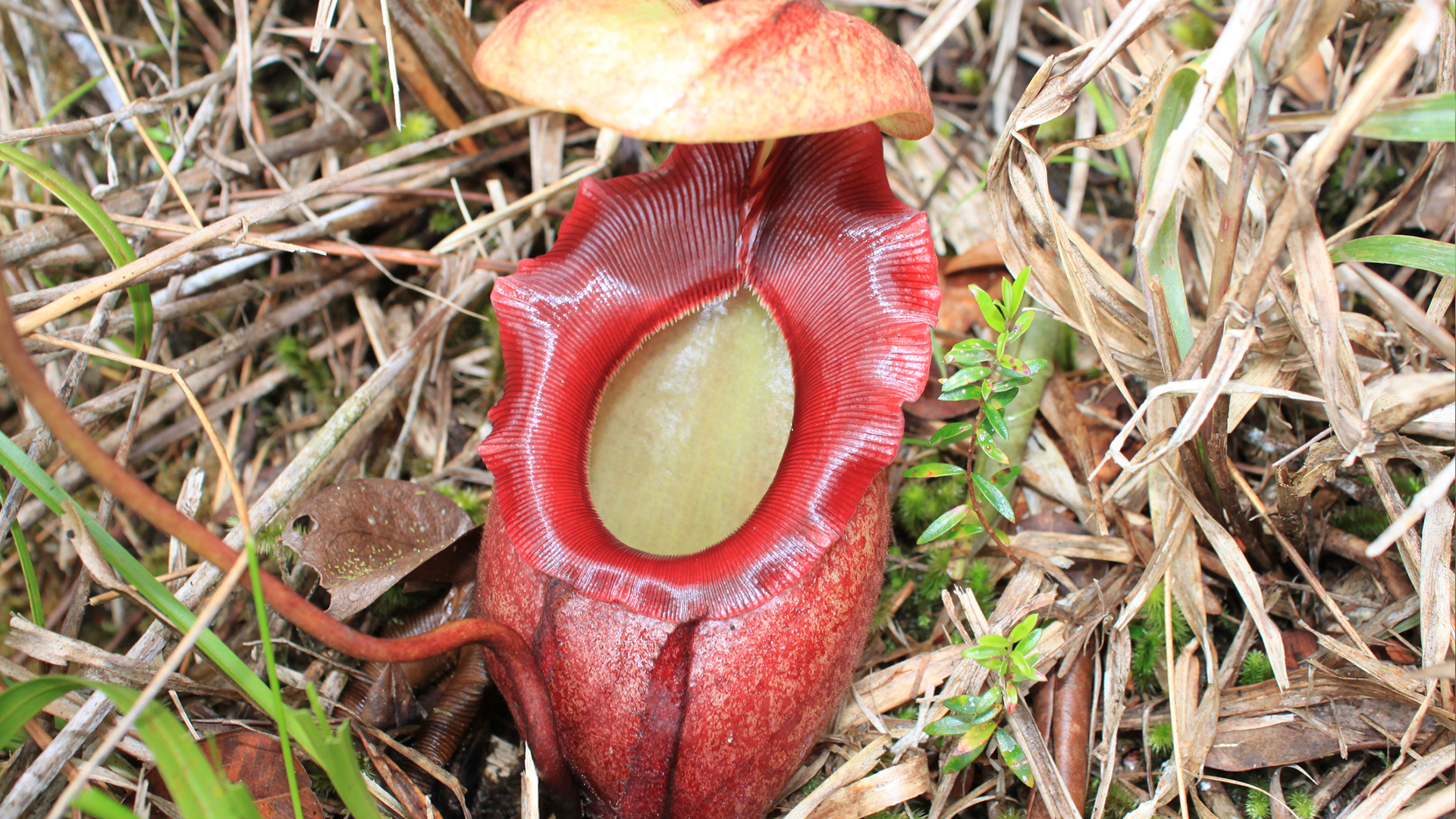
In contrast to the mighty rajah is the minuscule Drosera pulchella, or pygmy sundew, found in southwestern Australia. While they are only 15-20mm wide, they are still ferocious flesh-eaters. They attract prey by releasing a sweet-smelling secretion8 from tentacle-like projections on the ends of the leaves. This attracts insects that become stuck fast, before the tentacles contract and cover it with the mucilage.9 The insect is then slowly digested over a number of weeks.
Bladderworts use an entirely different method to capture their prey. Found in ponds, lakes and streams, “trigger” hairs on the surface of its “bladders” (small hollow sacs)10 are tripped when prey float by.11 As the bladder opens, water rushes in, bringing the prey in with it. This all occurs in less than a millisecond – more than 100 times quicker than a Venus flytrap.11 Found in the south-eastern United States, the large, swollen or inflated bladderwort is, as the name suggests, one of the biggest, with stems growing up to two metres long. In fact, its size in itself threatens native plants and insects, as this invasive carnivorous plant takes over large bodies of water.12
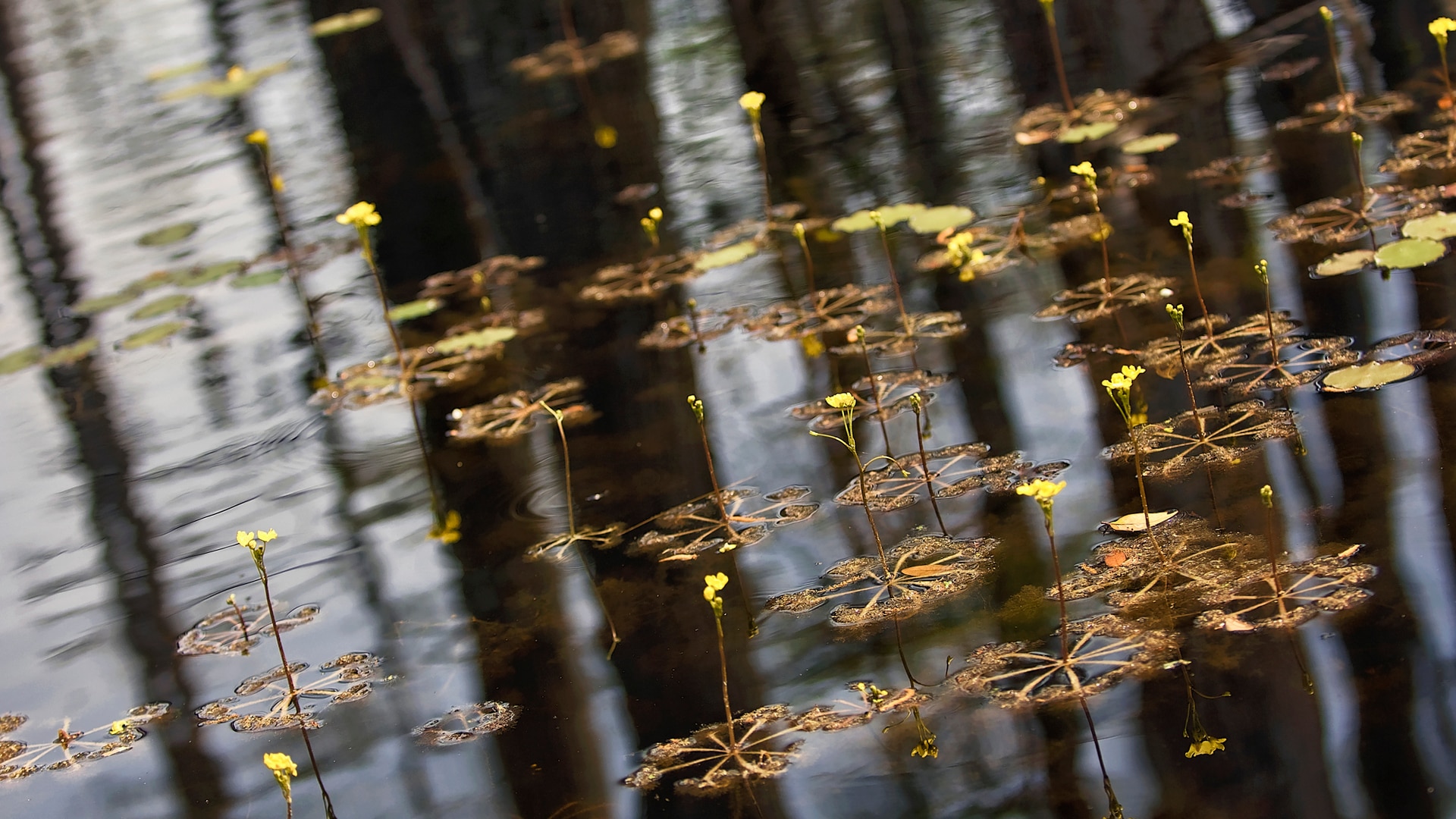
While some carnivores, like the Venus flytrap, look quite fearsome, others seduce their prey with innocence. Found in the Western Cape province of South Africa, this slender leaved shrub is somewhat deceptive in appearance.13 Also known as the flycatcher bush, it has “tentacles” that secrete a sticky resin to trap its prey. But the plant doesn’t then eat the insect. Instead, it waits for a jumping tree bug called Pameridea roridulae to eat the prey, while the plant enjoys the nutrients contained in the droppings that the bug leaves behind.14
Found in Western Australia (it’s also known as the Western Australian pitcher plant), the Albany is unique amongst carnivorous plants. The only species in the genus cephalotus, it’s thought to be an example of convergent evolution, meaning it developed similar traits to other organisms without being related to them. In fact, the plant is more closely related to cabbages and roses than other pitcher plants.15 But, like them, it features a tub-like leaf – or “pitcher” – with a lid to keep out rain. Insects are lured inside, attracted by the red-and-white colouring, but sharp teeth-like spikes around the rim prevent them getting back out again. They eventually slip down to the bottom of the pitcher, where they are digested in a pool of enzymes.16
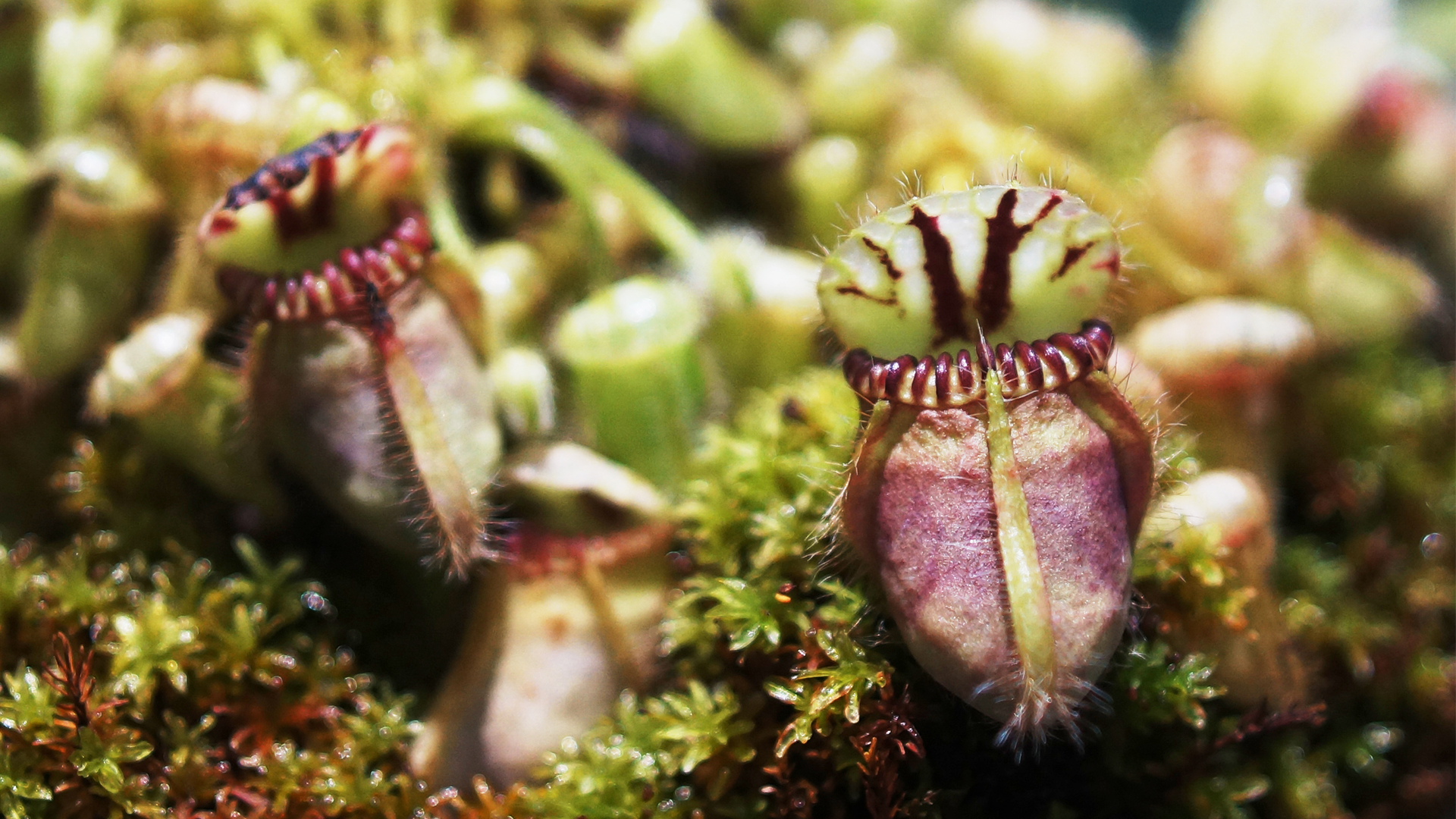
Bromeliads are the family of plants that contain pineapples as well as some popular, colourful house plants. But they also have some meat eaters in their midst.17 There are three carnivorous bromeliads, including brocchinia reducta, which grows in South America. Like other bromeliads, a rosette of leaves is used as a water store. This flower-like shape is thought to attract insects, as does a coating that reflects UV light. And just to make sure, it also secretes an appealing, sweet scent to draw in its dinner. Insects that are lured and trapped within, tire and drown, before eventually decomposing into a “nutrient soup.”18
This member of the pitcher plant family is so named due to its striking resemblance to the rearing head of a cobra. A forked leaf adds to the snake imagery, as it has a distinct tongue or fang-like quality. Again, it uses nectar to attract unsuspecting insects, but it also has another fiendish trick up its sleeve. Translucent patches on the cap above the leaf tube make the prey think it’s a route back to safety. But the futile escape attempts of the insect only lead to it struggling more and tiring itself out faster.19 Unlike other predatory plants, the cobra lily produces bacteria – rather than digestive enzymes – to break down the prey for absorption.
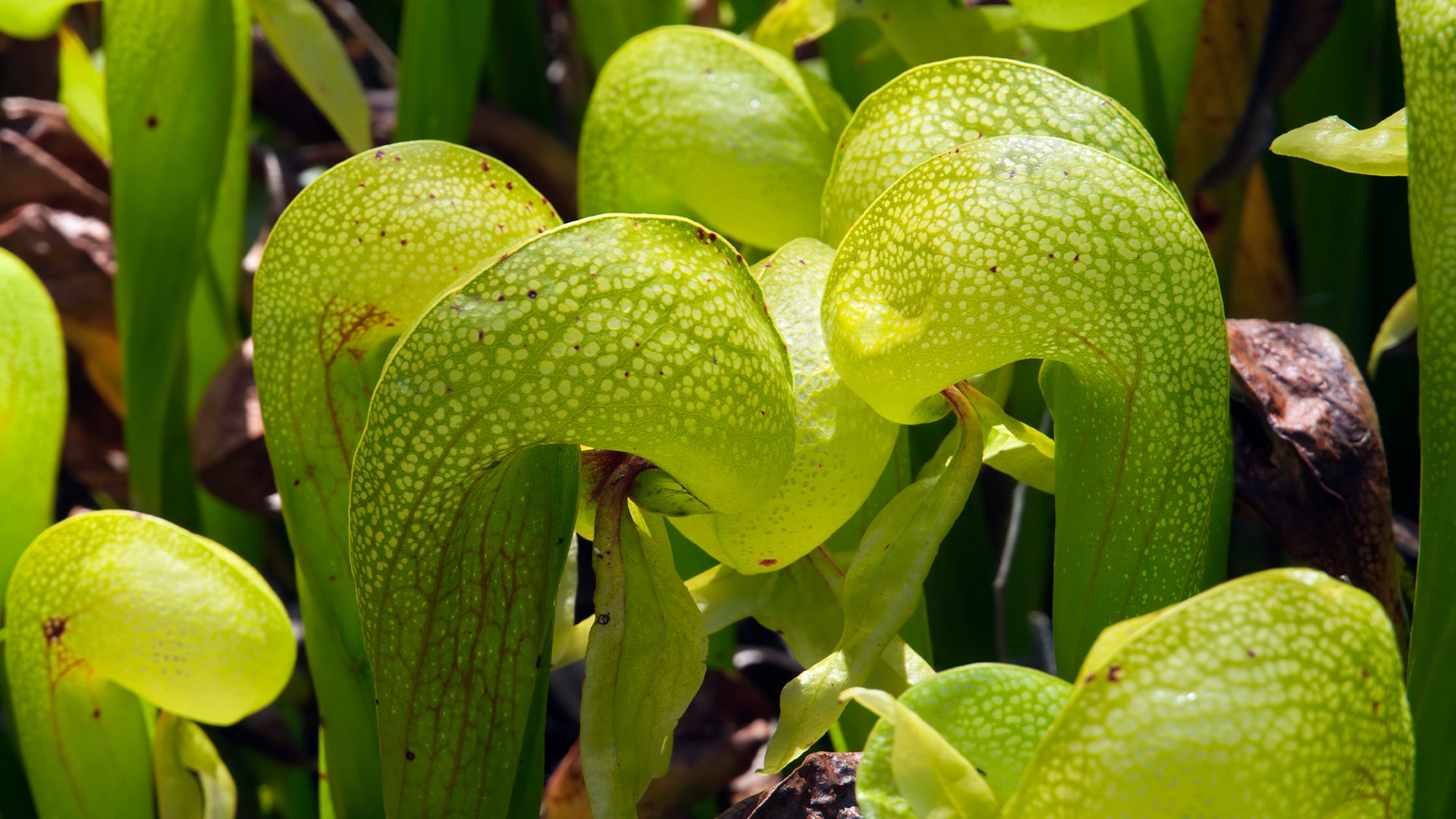
Potentially competing with the nepenthes rajah for the crown of the world’s largest carnivorous plant, Triphyophyllum peltatum grows a long stem that can be 50 metres in length and 10 cm thick.20 This incredibly rare species is a complete curiosity and its meat-eating nature was only realised 50 years after initially being discovered. Native to tropical West Africa, this nifty plant has a complex life cycle.21 Prior to flowering, the plant produces a tendril like leaf with a sticky surface that traps and absorbs insects. But after flowering, it moves away from its predatory habits and develops into a non-carnivorous climbing vine-like plant.
Featured image © Manassiri | Getty
1. Venus flytrap member of sundew family, 2. Venus flytrap digestion, 3. Venus flytrap stimulation, 4. Yellow Pitcher Plant location, 5. Yellow Pitcher Plant digestion, 6. Nepenthes Rajah digestion, 7. Nepenthes Rajah and shrew relationship, 8. Drosera Pulchella scent, 9. Drosera Pulchella prey catching, 10. Large Floating Bladderwort trigger hairs, 11. Large Floating Bladderwort speed, 12. Large Floating Bladderwort invasive nature, 13. Gorgon’s Dewstick location, 14. Gorgon’s Dewstick Pameridea roridulae, 15. Albany Pitcher Plant relations, 16. Albany Pitcher Plant digestion, 17. Bromeliads family, 18. Brocchinia Reducta digestion, 19. Cobra Lily digestion, 20. Triphyophyllum size, 21. Triphyophyllum Peltatum life cycle